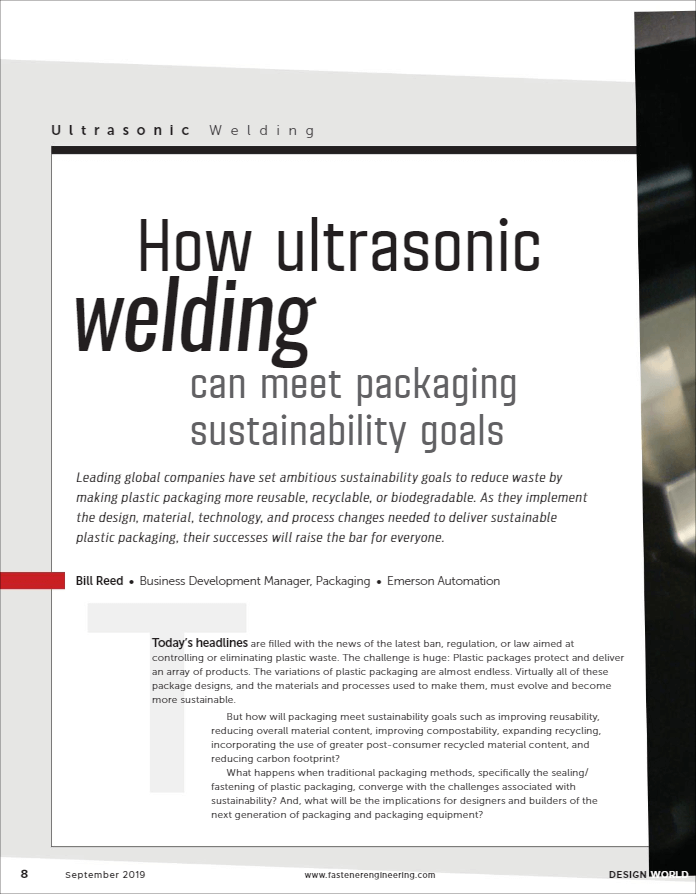 With sustainability a focus for manufacturers and producers, one industry that is particularly affected is food & beverage and other industries with consumer packaging needs.
With sustainability a focus for manufacturers and producers, one industry that is particularly affected is food & beverage and other industries with consumer packaging needs.
In a Fastener Engineering article, How ultrasonic welding can meet packaging sustainability goals, Emerson’s Bill Reed describes the challenges and how this technology helps to address them.
Bill highlights the challenges in packaging changes.
Plastic packages protect and deliver an array of products. The variations of plastic packaging are almost endless. Virtually all of these package designs, and the materials and processes used to make them, must evolve and become more sustainable.
Goals include:
…improving reusability, reducing overall material content, improving compostability, expanding recycling, incorporating the use of greater post-consumer recycled material content, and reducing carbon footprint?
As the materials change so must the approach to sealing, especially for foods and beverages which require safe, sanitary and complete seals.
Bill describes the advantages from a sustainability perspective of ultrasonic welding over the traditional heat tool sealing.
- Compatibility with new bio-based materials.
- Eliminates seal failures due to contamination.
- Reduces packaging material consumption.
- Eliminates adhesives and consumables.
- Reduces energy consumption and cost.
I’ll share the first point and invite you to read the article for the others.
Central to any sustainability program is the commitment to develop and expand the use of biodegradable, single-use packages that rely on bio-based materials like polylactic acid (PLA). But adapting packaging designs and traditional thermal sealing equipment to bond these materials with commercial-grade quality and reliability poses challenges, since biopolymers contain significantly less polymer content.
Compared to the simple time, temperature, and force settings of a heated tooling sealer, the precise, programmable controls of ultrasonic welding technology provide the user far more capability to manage the narrower processing ‘windows’ of bio-based resins… Ultrasonic sealing methods include weld-by-energy; peak power; and weld-by-time. Programmable amplitude provides fine-tune control of the heating potential from the resonating tooling.
Visit the Package Design with Ultrasonic Welding section on Emerson.com for more how ultrasonic welding can help packaging applications become more sustainable to meet consumer demand. You can also connect and interact with other ultrasonic welding experts in the Welding, Assembly & Cleaning group in the Emerson Exchange 365 community.





